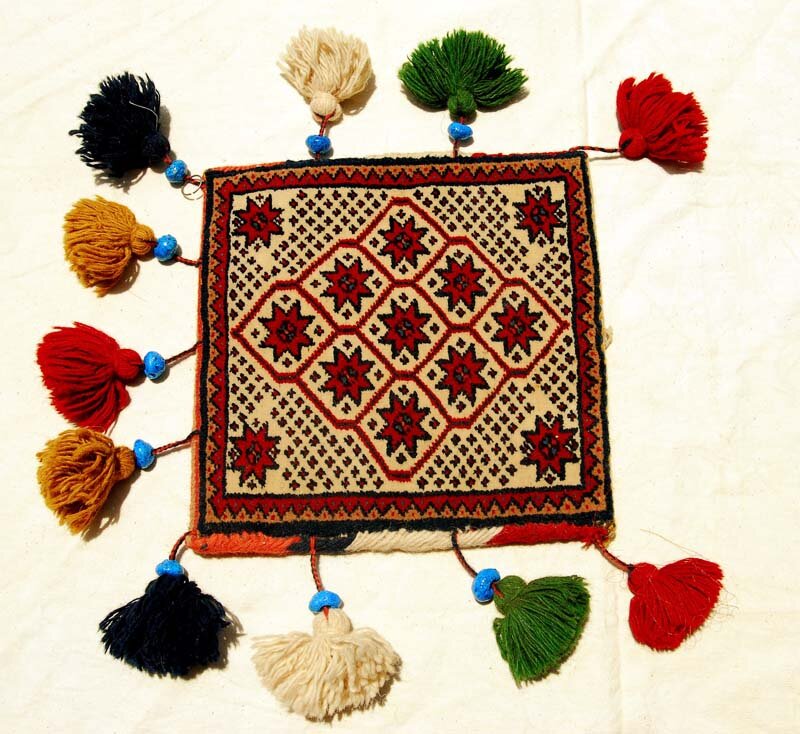Iranian handicrafts: Namakdan-Bafi

TEHRAN – Namakdan, a kind of handwoven saddlebag, is one of the ancient handicrafts being practiced across Chaharmahal-Bakhtiari province.
Such saddlebags are made to contain products like grains of wheat, oats, beans, and salt. They are woven on looms usually by nomadic and villager women. Nomadic shepherds use Namakdan to carry chunks or grind salt to meet the necessities of the herd.
In addition, nomadic people put salt in Namakdan and hang it in corner of their tents for cooking. Grind salt is very hard to prepare, and it is important to be taken care of. That is why the Namakdan is designed so that the salt does not pour out.
For nomadic people of the region, the salt is a valuable blessing, related with thankfulness, and greetings of the guests. People may swear in the name of Namak (the salt) and use the word “Namak Nashnas” (a person who does not pay the rights of Namak) to describe unworthy people who use the salt but break the salt holder, according to Visit Iran.
When it comes to form and design, Namakdan could be considered an important, valuable, and even holy object. It consists of a body and a head, which makes it look like a prayer rug. Weaving Namakdan has solid rules based on the following four principles:
The front is woven by Pich-Bafi (a special kind of knot of Kilim). The bottom is woven like carpets. The back is a plain Kilim with strip design, and finally, the two sides are Pich-Bafi.
Moreover, various motifs and patterns are applied to make the saddlebag. Patterns of Howz (a small pool), strips, regular polygons, repetitious polygons, fishes, birds, Setareh Kharchangi (craby star), and foliage are some of the designs that can be seen in Bakhtiari Namakdan that, being made by rich and bright colors, attract the praise of the viewer. Green, blue, dark red, yellow, and brown are the most common colors of Namakdan.
Chaharmahal-Bakhtiari lies in the southwestern part of the country. Its capital is Shahrekord. The province has various unique traditions and rituals relative to the 'tribal' lifestyles. Special forms of music, dance, and clothing are noteworthy. It has considerable potential to become a vibrant tourist attraction because of its changing natural landscape.
The province is also a hub for making wool felt products, majorly of which exported abroad. It is home to some 500 crafters, in over 250 workshops, making handmade felt products.
AFM

Leave a Comment